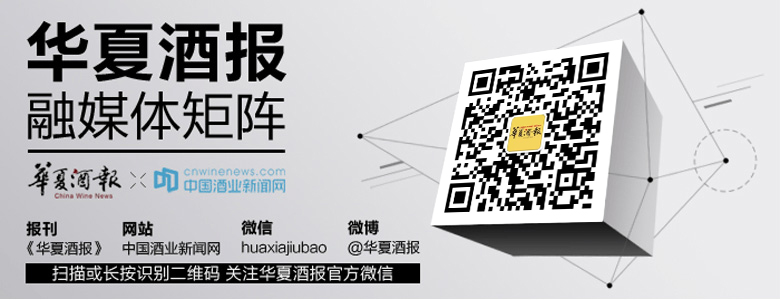Chinese born after the 1980s have very different tastes — in clothing, cars, food, mobile phone use — from previous generations. One difference is especially acute: they don’t like drinking baijiu.
Báijiǔ (白酒 literally, “white spirits”) is China’s national liquor with a head-spinning alcohol content of up to 60% ABV. It has been a ritual of social gatherings since as far back as the Tang Dynasty (618-907), and versions of the spirit have appeared in works by the famous poets Lǐ Bái 李白 and Bái Jūyì 白居易. When Nixon visited China, premier Zhōu ēnlái 周恩來 famously toasted him with Maotai, a traditional and expensive baijiu from Guizhou Province.
Due to its continued popularity in China, baijiu is the best-selling liquor in the world, with a market size of 600 billion yuan ($92 billion) in 2019. But the fermented grain drink is an acquired taste: to the unaccustomed, the spirit can be said to taste like “sweaty socks.”
“Baijiu consumption faces a serious structural problem,” said (in Chinese) the chairman of a Chinese baijiu manufacturer in 2016. “Young consumers born in the 80s and 90s are drinking less and less baijiu,” accounting for only 26% of total consumption. Those born in the 70s, by contrast, account for 40%. The average baijiu drinker is now 45 years old.
The growing chasm between young Chinese and their predecessors came into sharp relief in August last year when a new employee at a Beijing bank was slapped by his superior (in Chinese) after refusing to drink the potent spirit. For the older generation, drinking baijiu can sometimes seem like a rite of passage, or a sign of respect to elders. The incident stirred up a lively online discussion (in Chinese) and led to salary deductions for two bank managers implicated in the peer pressure.
Throughout the 2010s, baijiu took another hit when China’s anti-corruption policies cut down on a major revenue source: lavish government-sponsored meals. Facing an unfavorable trendline and cut loose from the indirect state subsidies, baijiu manufacturers are now looking for new sources of revenue. Some have tested their luck overseas, including Luzhou Laojiao in the U.S., and Jiangxiaobai in India, Myanmar, and Singapore. Others are now seeking to repackage themselves for a new age group.
Alcopops and other low alcohol products
One strategy from both dominant baijiu players — such as Maotai, Wuliangye, and Luzhou Laojiao — and smaller players has been to market baijiu with lower alcohol concentrations. Companies are also launching plum wines, fruit-flavored and tea-infused alcohols, and alcoholic sodas. Many are specifically marketed to younger women. In an online flash sale in March last year, top influencer Lǐ Jiāqí 李佳琦 sold 200,000 bottles of Meijian plum wine, a product of Jiangxiaobai.
“This is a 12% proof spirit manufactured specifically for women; it tastes great, you don’t get drunk too easily and it goes down easy,” said Li (in Chinese). “It’s the perfect drink for when you’re chit chatting with your girlfriends.”
Founded in 2012, Chongqing-based Jiangxiaobai bills itself as a baijiu brand for young adults. It is backed by leading institutional investors including Sequoia China and Hillhouse Capital. In 2019, its annual revenue was 3 billion yuan ($460 million) according to 36Kr (in Chinese). Traditional baijiu-makers Maotai, Wuliangye and Luzhou Laojiao have all since come out with their own (in Chinese) low-alcohol products.
Consumers and investors seem to like them. According to last year’s data (in Chinese) from Alibaba’s Singles Day, the world’s largest online shopping event, fruit-flavored alcohols were one of the highest growth categories in the alcohol department. Since 2016, more than 16 new low-alcohol beverage brands — such as rice wine brands MIK and Manmi (in Chinese), and plum wine brand Cool Drink — received funding from institutional investors, according to the consulting firm IT Juzi (in Chinese).
But whether this category can get off the ground is hard to tell. Last year, 90% of China’s 1.1 trillion yuan ($169 billion) alcohol market consisted of beer, wine, and baijiu. The industry for low-alcohol drinks remains in its infancy.
Fat free wine and tech-style startups
While traditional baijiu-makers make low-alcohol products, others are betting that high-proof baijiu is here to stay — it just needs a little makeover.
Jiangxiaobai is at the forefront of baijiu’s rebranding efforts from middle-aged ritual to edgy drink option. It’s bottles are smaller, with slick blue-and-white packaging, like an expensive phone. Each label now comes with clever-sounding philosophical quotes like a depressed fortune cookie message: “My stomach is growing, but my ideals are shrinking,” reads one label (in Chinese). “We experience the present alone, but we yearn to talk about the past and future together,” reads another.
If Jiangxiaobai’s “expression bottle” adds a sentimental touch, three new entrants — Kaisan Baijiu (開山白酒), Guanyun (觀云白酒), and Guxiaojiu (谷小酒) — are taking baijiu into new digital terrain. Like many upstarts in China’s new digital ecosystem (including electric vehicles and beverages), Guanyun is founded by programmer Chen Zhenyu (陳振宇), and Guxiaojiu is founded by former Xiaomi brand director Liu Fei (劉飛).
In January, Genki Forest, an up-and-coming health beverage startup also helmed by a professional programmer, bought a 15% stake in Guanyun. Investments in the new baijiu space continue to flourish. Hillhouse Capital, an investor in Jiangxiaobai, also bought a stake in Guangliang Liquor for tens of millions last year (in Chinese). The three-year-old startup expects to achieve 3 billion yuan ($460 million) in sales this year.
With tech genes come savvy digital marketing tactics. Guxiaojiu was the first liquor company to collaborate with (in Chinese) internet celebrity Luó Yǒnghào 羅永浩 on Douyin, the Chinese version of TikTok. The “new baijiu” brands continue to roll out short videos on live-streaming platforms, a major engagement hub for Chinese youths. One video (in Chinese), which depicted young Chinese chugging new baijiu to address their “heartbreak,” garnered 2.46 million views.
Recently, some companies have co-opted the health beverage start-up Genki Forest’s signature (although not uncontroversial) “zero sugar, zero calories” marketing strategy. The liquor maker Ten-Fifteen (十點一刻) just released a “sugar-free and fat-free” sparkling wine with flavors such as white peach oolong, strawberry rose, and coffee whiskey.
Baijiu is entering into a new era of innovation, and while many experiments will fail, the market offers room for error. A report (in Chinese) released by Ries Consulting showed that even while baijiu consumption was waning, sales are set to grow at a pace of 6% YoY to 850 billion yuan ($130 billion) by 2025 due to new price expectations.
So the industry is hardly dying. But whether baijiu-makers, some of which have centuries of history, can reinvent themselves for young, individualistic Chinese remains to be seen.
編輯:Frida Xu

